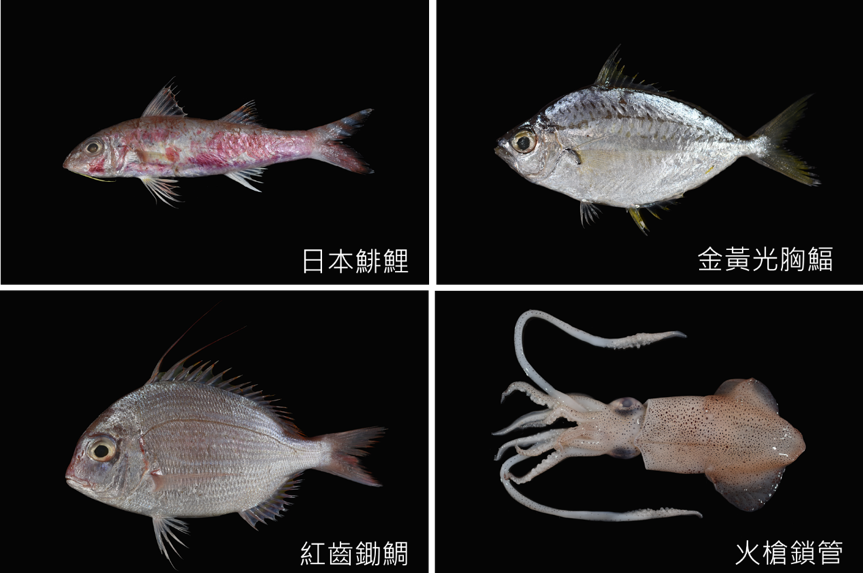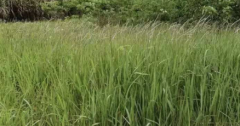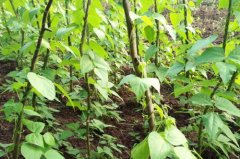The biodiversity in the Changhua sea area of Taiwan is high, and the seaweed boat research will be carried out to promote the transformation of the fishery.
In 2020, Taiwan will complete two wind farms in Changhua and one offshore demonstration wind farm in Miaoli. In the past, the location of the wind farm overlapped with the fishing and fishing operation field along the western coast, causing fishermen to worry. In 107, the Council of Agriculture commissioned the Fisheries Laboratory to conduct the "Environmental observation in the Sea area of Western Taiwan and bottom trawl Test Survey in Changhua Wind Farm" in the predetermined area of Changhua Wind Farm. The test results of bottom trawlers were released on the 12th. More than 36 families of marine organisms were collected, which showed that the marine biodiversity in the Changhua wind farm area was high, which could not be directly applied to the existing foreign ecological impact results, and needed continuous monitoring. In order to formulate appropriate fisheries policies in accordance with local conditions.
Ye Xinming, head of the Marine Fisheries Group of the Water Test Institute, said that the environmental impact assessment of each wind farm location only takes the wind farm around the wind farm as the sampling point, while the water test institute's survey project is aimed at the western economic sea area and Changhua demonstration wind farm. More than 30 sampling sites and 8 trawl test boat sampling stations are set up, which will last for 4 years. It is hoped that a complete survey data on the relationship between the demonstration wind farm and the marine environment will be built. To facilitate the planning of wind power and fishery development.
Foreign research with high biodiversity in the western sea area can not be directly applied.
The water test points out that due to the influence of factors such as monsoon and ocean current, there are differences in water temperature, salinity and nutrients in the four seasons in the Taiwan Strait, shaping the rich marine ecological features in the western sea area. In 107, at 8 bottom trawler sampling sites in Changhua demonstration wind farm, more than 36 families of marine life were collected, including white bone mackerel, golden money, Hong Qiu, etc.; crustaceans are mainly roasted shrimp, and cephalopods are dominated by musket locks and Chinese gun locks, which are common local catch species.
Ye Hsin-Ming said that it is also because the biodiversity in the waters of western Taiwan is so high that it is impossible to directly apply the results of ecological surveys conducted by countries with wind power. For example, Britain mainly tracks the dynamics of cod and groups of fish under the influence of the wind field. "Foreign fishing is mostly a single species, but Taiwan is a multi-species environment, so it is difficult to compare together." And different countries have different biological types and purposes of ecological impact assessment, so it is better to collect basic data from Taiwan for application.
Ye Xinming pointed out that the environmental observation in the sea area of western Taiwan and the bottom trawl test survey in Changhua wind field were divided into two parts, except for sampling bottom trawlers at Changhua wind farm 8. In addition, more than 30 testing sites have been set up in Miaoli, Yunlin, Changhua, Penghu and other places, hoping to monitor the relationship between western demonstration wind farms and marine ecology on a large scale, provide relevant units to develop policies, and communicate with experts from the United Kingdom, the Netherlands and other countries.
The Water Test Institute conducts seaweed boat research with a view to helping fishermen change jobs.
Although the development of offshore wind power helps to reduce dependence on non-renewable energy and air pollution, at present, offshore wind power demonstration farms are mostly located in traditional offshore fishing grounds such as Changhua and Yunlin, so it is a difficult problem to strike a balance between the livelihood of fishermen and the national energy policy.
Referring to the waters where foreign wind farms and fisheries overlap, the Water Test Institute will adopt a fishing ban policy at a specific time, or in the direction of combining aquaculture, so in 106, it also launched a feasibility study on setting up seaweed pastures in offshore wind farms in Changhua. Miaoli and other offshore wind farms set up seaweed and oyster culture facilities, "hope to assist domestic fisheries, in response to the possible ecological impact of wind farm setting." Adjust the economic plan. Ye Xinming added that at present, large fish rarely seen in the past have been seen around seaweed vessels, and they will also experiment with high unit price algae in the next four years, hoping to assist fishermen in the transformation.

- Prev

Introduction to the natural agricultural method of planting in thick soil, is planting in thick soil reliable? what are the advantages of planting in thick soil?
Do you know the method of planting in thick soil? What are the benefits of this planting method? What is used to make thick soil? do you want to know? Yesterday, the Tree Valley Culture Foundation invited Jiang Huiyi, a teacher from the Earth Traveler, to demonstrate the thick soil species.
- Next

The cultivation and field management of kidney beans, the cultivation of kidney beans soil ph value is the most suitable
Bean this kind of plant is more like light and warm, its cultivation is also relatively simple, then you know how to grow beans? If you want to know, then come and have a look! Bean likes warm weather, does not tolerate high temperature and frost, and its seeds are suitable for germination when planted.
Related
- A course of planting techniques and methods on how to grow carrots
- How to plant the latest tulips?
- Is it better to pick tea in the morning or in the afternoon? When is the best time for tea to be picked? what is the third or fifth tea?
- Launch Yuanxiao Happy combination Haocha + Tea Yuan healthy Taste
- Penghu Tourism "Fireworks 20 Parade with You"
- 2022 West Lake Happiness holds "Digital Revitalization Voucher" and draws iphone13 and laptop.
- Banqiao Fuzhou social houses are designed to change start-up combined with police elimination to create a safe and livable environment
- The convenient measure of "mechanical weeding" in Xinbei has been abused and the Agriculture Bureau has imposed heavy penalties on the illegal land consolidation.
- Changgeng University Joins Hands with Four Memory Factories to Rescue Memory Talent Shortage
- The list of Taiwan's top 100 MVP managers is listed by the Director-General of the Farmers' Association of Sanxia District.

